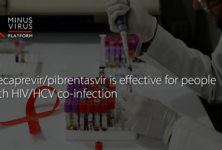No new HIV infections have been seen among nearly 1000 people who started Truvada for pre-exposure prophylaxis (PrEP) at Kaiser Permanente Northern California, according to a recent report in the Journal of Acquired Immune Deficiency Syndromes. The most recent analysis shows, however, that incidence of chlamydia and gonorrhoea is high, suggesting that sexually transmitted infection (STI) testing may be needed quarterly rather than every six months.
The US Food and Drug Administration (FDA) approved Gilead Sciences’ Truvada (tenofovir/emtricitabine) for HIV prevention in July 2012, based in part on data from the iPrEx trial of mostly gay and bisexual men, which showed that daily Truvada reduced the risk of HIV infection by 42% overall, rising to 92% among participants with blood drug levels indicating regular use. An open-label extension of iPrEx saw no new infections among participants who took Truvada at least four times a week. However, ‘real-world’ outcomes often do not match those seen in carefully managed clinical trials. The cost of medication in the US may be one barrier to consistent PrEP use outside of trials.
Julia Marcus of Kaiser Permanente Northern California’s Division of Research, Jonathan Volk of Kaiser Permanente San Francisco Medical Center, and colleagues conducted the largest study to date of PrEP use in clinical practice, looking at patterns of PrEP initiation, adherence, incidence of HIV infection and STIs, and changes in kidney function.
Kaiser Permanente Northern California is a large integrated health system that includes San Francisco and Oakland. Kaiser providers refer members to specialised PrEP clinics after risk assessment or upon request. Follow-up consultations are typically done by phone or email, with lab tests done on a drop-in basis. Members initially receive in-person adherence counselling, followed by telemedicine adherence support if they miss a prescription refill or are late for lab tests.
Members receive HIV, STI and creatinine kidney function tests before starting PrEP. The tenofovir in Truvada can cause kidney toxicity and people with pre-existing kidney problems are advised not to take it. Repeat HIV and creatinine tests are required at least every three months and quarterly STI tests are advised. This is more frequent than the twice yearly STI screening recommended in the US Centers for Disease Control and Prevention (CDC) PrEP guidelines.
This cohort study included all 972 members who started Truvada for PrEP at Kaiser Permanente Northern California from July 2012 to the end of December 2014; follow-up continued through June 2015.
Almost all PrEP users (98%) were men, mostly gay or bisexual; only 20 were women and one was a transgender man. The average age was 38 years (range 18 to 68). Most (70%) were white, 12% were Hispanic/Latino, 10% were Asian/Pacific Islander and 4% were black. (For comparison, San Francisco’s population is about half white, a third Asian, 15% Latino and 6% black, while Oakland is about a third white, a third black, 15% Asian and just over 20% Latino). About 90% had at least a high-school education and the median household income was approximately US$74,000. Only one PrEP user reported injection drug use.
At baseline 16% had an STI, but 34 had one in the past two years (13% gonorrhoea, 13% syphilis, 15% chlamydia). Just under a third had an estimated glomerular filtration rate (eGFR) below 90, indicating mild kidney function impairment; 60 is the usual cut-off for kidney disease.
As previously reported, PrEP referrals and the number of people starting PrEP at Kaiser Permanente’s San Francisco Medical Center began rising around September 2013, with a steeper increase after the US CDC recommended in May 2014 that people at substantial risk for HIV infection should consider PrEP.
The current study found that adherence based on pharmacy refills was good, averaging 92%. Black members, smokers and people with higher insurance co-pays were significantly more likely to fall below 80% adherence (adjusted risk ratio 3.0, 1.6 and 2.0, respectively). The researchers suggested that telemedicine support may have helped bring adherence rates above those seen in prior PrEP studies.
At the end of follow-up 70% were still on PrEP at Kaiser, with 23% discontinuing PrEP and 8% leaving the health plan; nearly one in five who discontinued ended up restarting Truvada. Women and people with drug and alcohol use disorders were significantly more likely to stop PrEP (adjusted risk ratio 2.6 and 1.8, respectively).
No HIV seroconversions occurred during regular PrEP use. However, two people (a black man and a Latino man, both under age 30) became infected after discontinuing PrEP due to loss of insurance coverage.
PrEP users typically sought STI testing four or five times a year. Of the 972 users, 342 (35%) were diagnosed with at least one STI during follow-up; 173 people had multiple STIs (including a person with 19 diagnoses). A total of 771 STIs were diagnosed, for a rate of 90.7 per 100 person-years.
After 12 months on PrEP, cumulative incidence rates were 42% for any STI, 27% for any rectal STI, 26% for chlamydia, 23% for gonorrhoea and 7% for syphilis. Rectal chlamydia and urethral gonorrhoea increased significantly over time. The researchers suggested that the rise in STIs could be attributable to changes in sexual behaviour after starting PrEP or changes in testing frequency.
Among 909 participants who underwent follow-up kidney function testing, 16% had an eGFR below 70, and 5 people (0.6%) stopped PrEP due to concerns about kidney toxicity. Older people and those who started with a lower eGFR were at greater risk for declining kidney function while on PrEP, with a borderline increase for people with diabetes. But kidney function decreases were uncommon among PrEP users with baseline eGFR above 90, leading the researchers to suggest that less frequent creatinine monitoring may be appropriate for this group.
In conclusion, the study authors wrote, “PrEP adherence was high in clinical practice, consistent with the lack of HIV seroconversions during PrEP use. “Discontinuation because of renal toxicity was rare.”
“STI screening every six months, as recommended by current guidelines, may be inadequate,” they added. “Strategies are needed to facilitate linkage to PrEP programs in other clinical settings and navigation of medication assistance programs for PrEP users who lose or switch insurance coverage.”
The researchers noted that most repeat STIs occurred less than six months apart, and given that rectal and pharyngeal (throat) STIs are often asymptomatic, these infections could have remained undetected for months if screening had been conducted only twice yearly. Other recent studies have also found that testing every three months instead of every six months could catch more STIs sooner.
“The large number of STIs diagnosed, most of which were asymptomatic, highlights the importance of STI testing as part of PrEP delivery and suggests that screening for STIs every six months as recommended by current guidelines would result in delays in diagnosis and treatment and may contribute to the further spread of these infections,” Volk said.
As a limitation, the researchers acknowledged that although Kaiser Permanente Northern California provides care for nearly half of insured individuals in the surrounding area, this PrEP cohort was largely male, older, white and of high socioeconomic status, thus limiting generalizability of the findings to uninsured, female, younger, non-white and lower socioeconomic status individuals at risk for HIV.
By Liz Highleyman
Reference
Marcus JL et al. Preexposure prophylaxis for HIV prevention in a large integrated health care system: adherence, renal safety, and discontinuation. Journal of Acquired Immune Deficiency Syndromes 73, 2016. doi: 10.1097/QAI.0000000000001129.


 ПОИСК ПО САЙТУ
ПОИСК ПО САЙТУ  поиск по ресурсному центру
поиск по ресурсному центру 



